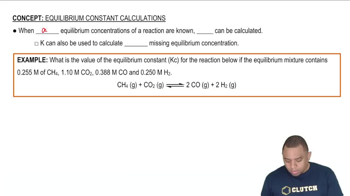Refer to the figure showing the structure of various ligands to answer questions 4 and 5. Which ligand(s) can participate in linkage isomerism?
(a) All of the ligands can participate in linkage isomerism
(b) I, II, and III
(c) I and IV
(d) II and IV




Refer to the figure showing the structure of various ligands to answer questions 4 and 5. Which ligand(s) can participate in linkage isomerism?
(a) All of the ligands can participate in linkage isomerism
(b) I, II, and III
(c) I and IV
(d) II and IV
Identify the false statement about the structures of the complex ion [Fe(en)2Cl2]+ shown below.
(a) Structures I and II are cis-trans isomers.
(b) Structures I and IV are cis-trans isomers.
(c) Structures I and III are enantiomers.
(d) Structures II and IV are enantiomers.
Propose structures for molecules that meet the following
descriptions.
(c) Contains an S atom that has a coordinate covalent bond
What hybrid orbitals are used by the metal ion and how many unpaired electrons are present the complex ion [VCl4]- with tetrahedral geometry?
(a) sp3; 2 unpaired electrons
(b) sp3; 3 unpaired electrons
(c) sp3d2; 3 unpaired electrons
(d) sp3d2; 4 unpaired electrons
What is the electron configuration of Co2+ and how many unpaired electrons are in the free transition metal ion?
(a) [Ar]3d54s2; 5 unpaired electrons
(b) [Ar]3d54s2; 1 unpaired electron
(c) [Ar]3d7; 3 unpaired electrons
(d) [Ar]3d7; 1 unpaired electron
Draw a crystal field energy-level diagram for the 3d orbitals of titanium in [Ti(H2O)6]3+]. Indicate the crystal field splitting, and explain why is [Ti(H2O)6]3+] colored.